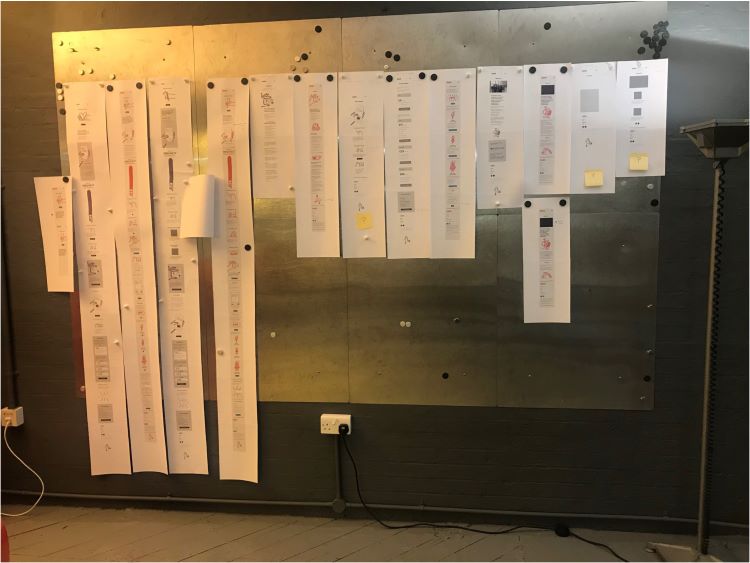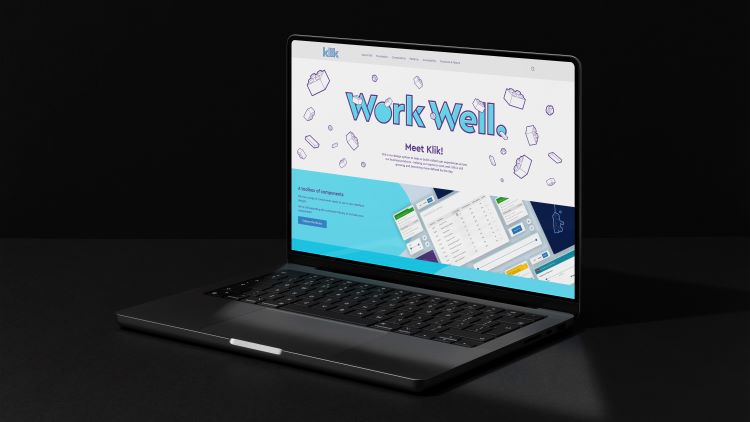How to build better relationships between in-house and consultancy teams
Fruitful collaboration between design teams on both sides of a brief requires honesty, flexibility, and open-mindedness.
Client-side design departments are increasingly common across many different sectors. But they don’t always have the resources, or specialist expertise, to handle everything from strategic brand thinking right down to the rollout of day-to-day design requirements – which means an ongoing need for in-house teams to build streamlined, fruitful working relationships with external consultancies.
Having design leaders on both sides, however, means a different dynamic from the traditional split between marketing and creative. Before co-founding Brighton-based brand consultancy UnitedUs, Luke Taylor worked in-house at various government organisations so has witnessed both sides. “An external agency offers a different viewpoint,” he says. “Internal teams may know a lot about the political issues or barriers to success, but they can also be worn down by that process.”
“Often, agencies come in and ask questions you haven’t asked yourself in a long time,” says Julia Kestner, designer advocate manager at Figma, a browser-based platform for collaborative design. The dynamic of the collaboration inevitably varies depending on size, sector, and stage of growth: “Start-ups may be hesitant to hire lots of in-house designers, whereas a longstanding in-house team might be looking for a fresh perspective,” she adds.
Start the conversation early
Productive and rewarding collaborations often involve both partners as soon as possible. For instance, the in-house design team at fintech start-up ANNA built an intensive year-long partnership with London-based consultancy NB Studio to help define its brand while the product itself was still a work-in-progress.

“They still had a question mark in their mind, rather than a solution,” recalls Nick Finney, NB’s creative director and co-founder. “It wasn’t just about making it look pretty. In my experience, the earlier you get in the room the more fun it is, the more you learn, and the more you take away from it.”

“You can get too close to something when you’re inside an organisation,” adds Daljit Singh, chief design officer at ANNA, who brings over two decades of agency-side experience to the role. “A good, close external relationship is very powerful. The articulation of language is often clearer, and when you work together in a sincere way it really feels like a partnership.”
Be honest to build mutual trust
In Luke Taylor’s experience, client-side teams may struggle getting buy-in from the rest of the organisation to make big things happen. “An external agency can bring some gravitas,” he suggests. Rather than seeking sign-off on the resources to handle the entire endeavour in-house, getting the ball rolling externally with a self-contained budget can also be simpler.

UnitedUs collaborated closely with LEGO’s in-house team to develop Klik, a digital design system to help streamline the workflow for the brand’s diverse digital design needs. “We hosted the LEGO team for weeks at a time. They were even at our Christmas party,” recalls Taylor. “We became one close-bonded team over this project.”

Communication is at the heart of any healthy working relationship. “Success hinges on it,” says Rupal Parekh, associate partner at Work & Co. She gives the example of a recent project with professional golf organisation PGA Tour to establish a new look and feel for its digital products, which relied heavily on shared Figma and Slack spaces throughout.
“We call it active collaboration,” she continues. “Talking openly about what each team requires from the other helps facilitate accountability and a positive working environment. As teams are dispersed and working in hybrid environments, we find that real-time communication channels are core to project health, enabling fast feedback loops.”
Embrace a more open-source process
ANNA’s design team is well-accustomed to this kind of workflow, using Figma for everything from day-to-day design tasks to pitch presentations. “Seeing the process as well as the answer can be very educational,” Singh reflects. “It’s great for client-agency relationships.”
When NB Studio came on board, the consultancy adopted ANNA’s transparency. “Our usual process is to listen, go away and iterate, and share when you can,” reveals Finney. “Here, we had to work tactically and practically at the same time.” One half of the NB team worked on the big idea, while the other worked in tandem on details like buttons and fonts.

“It’s the worst thing when everyone works on their own stuff and doesn’t talk to each other,” says Figma’s Julia Kestner. “Ideally, everyone has visibility of everything.” But for agencies still used to preparing polished presentations, it can take time to adapt. “It’s a different kind of workflow,” adds Kestner. “People are afraid of clients leaving comments as they’re working on files. But if you get feedback early, you can incorporate it as you go. If you’ve spent weeks on a presentation and then get feedback, it’s easy to be defensive.”
“There’s the dreaded ‘over-the-shoulder’ fear as a designer, with plenty of memes about a client being in your file while you’re working,” says Taylor. “But actually, them seeing you work is really important. It opens conversations about why we’re doing what we’re doing. We’re not in the business of mysticism; we like to be open.”
Agree on a single source of truth
When collaborating on digital product design in particular, the complexity of the process depends on where the specialisms sit. “Do you have product design roles on both sides, or engineering one side, design the other?” asks Kestner. “It’s always challenging when different worlds come together, but as long as you can align on a single source of truth – and agree who has the final decision – it can work well.”
Taylor advises focusing on small wins as well as aligning on the big picture. “Often how you get there might be different, which can cause friction,” he points out. “Agree on the goal, then collaborate around micro interactions and smaller engagements.”

For the Klik project, UnitedUs gave LEGO’s in-house team the opportunity to trial a Figma-based workflow. Until recently, partner organisations had to choose which side’s Figma account should host the process – but this could complicate matters later, such as when migrating project files to the client-side team to manage the roll-out. New functionality overcomes this hurdle, so entire projects or teams can be transferred easily between accounts.
Make every face-to-face minute count
As digital collaboration tools become more powerful, and remote working part of the dynamic for most teams, many businesses are questioning how to get the most value from in-person engagement. Kestner’s team at Figma is spread across Europe, Japan, and the US, so facetime is precious. “We prioritise getting to know each other, and building trust,” she explains. “If you have something critical to say, it’s always easier if you know each other.”
“Ideas come out when you’re relaxed,” agrees Singh. “There are certain pivotal moments, like going for lunch together, or a beer after work. When you’re focused on delivering and getting work done, often the headphones are on and you’re not talking anyway. But at points when you’re developing ideas, and doing thinking not defined by a brief, having an environment where you’re together can always be valuable.”
Trust, repartee, shared understanding, and a truly collaborative working process are all vital ingredients of a thriving creative partnership. According to Kestner, there’s one more: “Have fun,” she smiles. “Everything is an opportunity to try something new, and when people have fun, it usually creates better outcomes. After all, laughing with your customers is so much more enjoyable than fearing all the time.”
Discover how Figma’s all-in-one design platform can help your team collaborate more efficiently.
-
Post a comment





